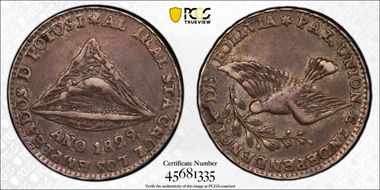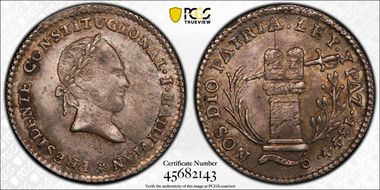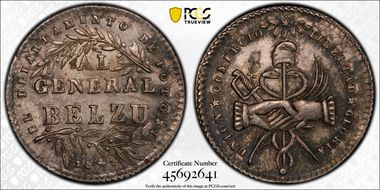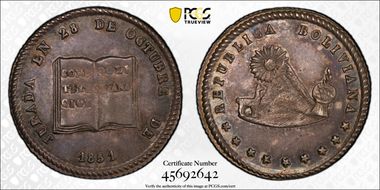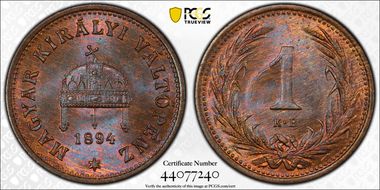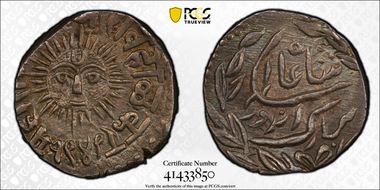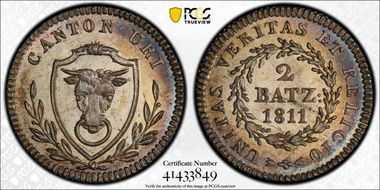PCGS Certified Coins 的展示图片库
A pleasing example with some high point wear and original toning. Although it's listed as a 1 Sol by Burnett and Fonrobert, it is smaller and is very likely a ⅛ Peso. Struck during the rule of José María de Achá, the 14th President of Bolivia (1861-4). José María Linares, the first civilian president of Bolivia, was initially an honest and popular ruler. However, his reforms resulted in many threats to his rule, and he declared himself Dictator for Life in 1858. His Minister of War, José María de Achá, staged a coup d'état against him. Achá would soon face similar turmoil and rebellion, and was overthrown in 1864. Although Bolivian proclamation coins are not listed in standard catalogs as coins, there is a significant amount of evidence that they were coins and used as such in commerce. A comprehensive argument was made by Paul J. Bosco in 1980, with others adding important evidence. An important contributor was Dr. Richard Doty, who demonstrated that the metrology of the proclamations is exactly the same as contemporary denominations. Some major points include that: -Between 1830 and 1852 there were no silver minors minted, but a large quantity of proclamation coins were. -Sizes correspond to exact denominations. Dies, edges, and sizes are the same as for regular coins. -Designs were not shared for gold and silver pieces as they would be for medals. -They were recorded in Argentinian conversion tables used in the 19th century. -Contemporary documents refer to them as coins -Pieces are usually found worn and often holed, suggesting their use in commerce. -1400 pieces were found in a Cochabamba bank's vault -Many were struck over previous coinage from the realm. Despite this, they are still not included in the Standard Catalogue of World Coins, and are instead officially termed as “monetary medals”.
Plate coin for the HMZ Catalog. 2.74 g. D.T. 76. HMZ 2-993a. Prachtvolle Erhaltung. FDC / Cabinet piece. Brilliant uncirculated. Kleiner Schrötlingsfehler / Minor flan flaw. Uri didn't mint many of its own coins during the joint minting period with Schwyz and Nidwalden. The majority of their own issues were produced in the first half of the 17th century, and they issued just four coins in the 18th century (four years of the same ducat). The four coins that were in the 1811 series were the first they'd made in 75 years, and the last that they would ever mint.




















